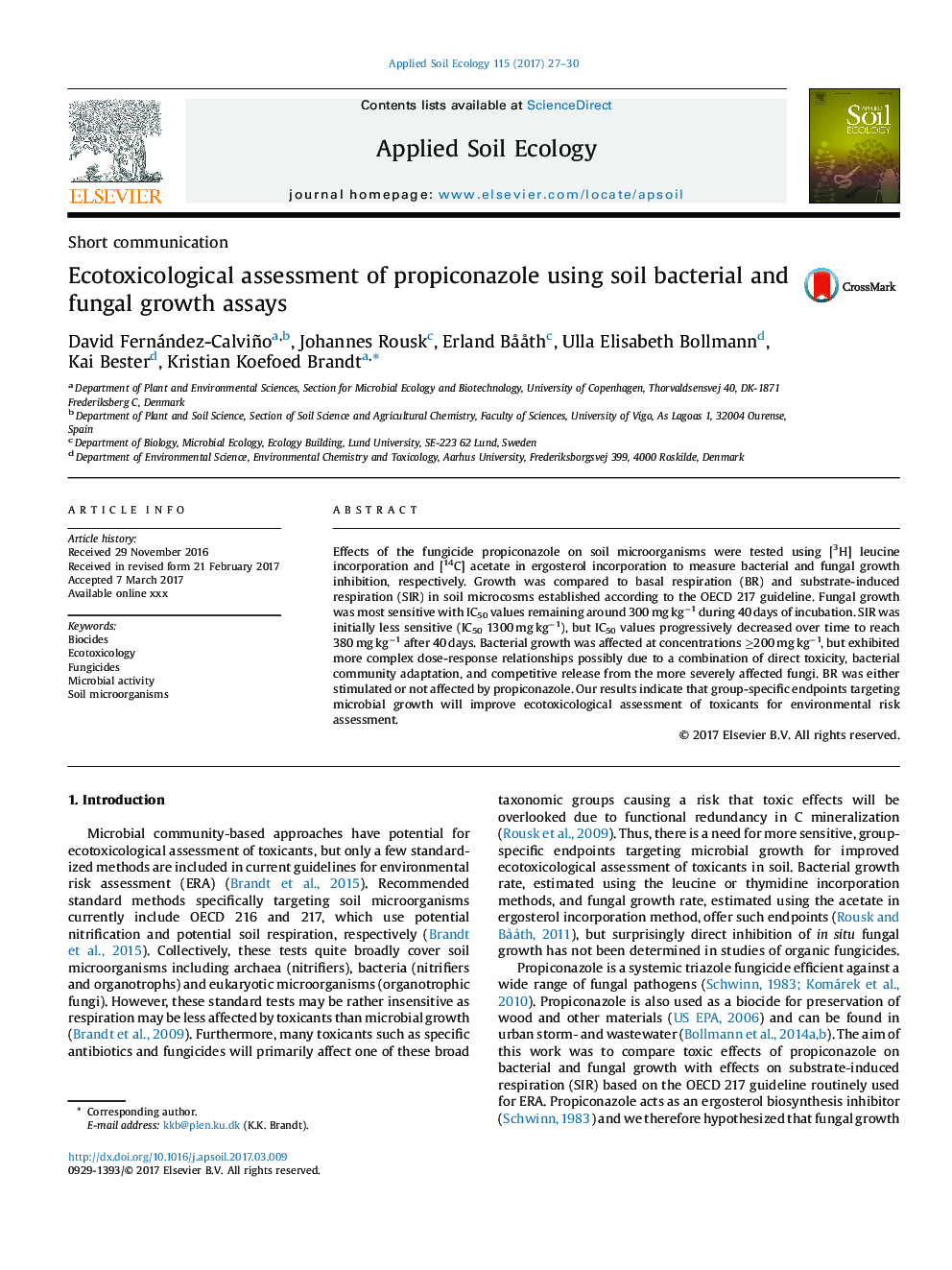| Article ID | Journal | Published Year | Pages | File Type |
|---|---|---|---|---|
| 5742683 | Applied Soil Ecology | 2017 | 4 Pages |
Abstract
Effects of the fungicide propiconazole on soil microorganisms were tested using [3H] leucine incorporation and [14C] acetate in ergosterol incorporation to measure bacterial and fungal growth inhibition, respectively. Growth was compared to basal respiration (BR) and substrate-induced respiration (SIR) in soil microcosms established according to the OECD 217 guideline. Fungal growth was most sensitive with IC50 values remaining around 300 mg kgâ1 during 40 days of incubation. SIR was initially less sensitive (IC50 1300 mg kgâ1), but IC50 values progressively decreased over time to reach 380 mg kgâ1 after 40 days. Bacterial growth was affected at concentrations â¥200 mg kgâ1, but exhibited more complex dose-response relationships possibly due to a combination of direct toxicity, bacterial community adaptation, and competitive release from the more severely affected fungi. BR was either stimulated or not affected by propiconazole. Our results indicate that group-specific endpoints targeting microbial growth will improve ecotoxicological assessment of toxicants for environmental risk assessment.
Related Topics
Life Sciences
Agricultural and Biological Sciences
Ecology, Evolution, Behavior and Systematics
Authors
David Fernández-Calviño, Johannes Rousk, Erland Bååth, Ulla Elisabeth Bollmann, Kai Bester, Kristian Koefoed Brandt,
